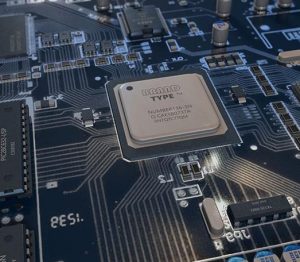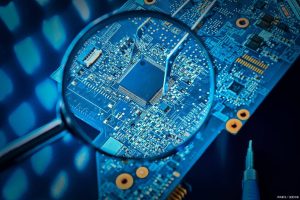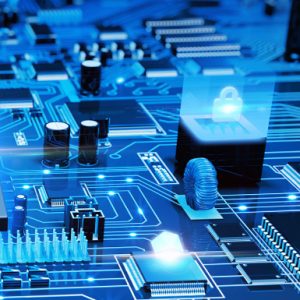In the rapidly evolving world of consumer electronics, integrated circuits (ICs) play a pivotal role in enhancing the functionality and efficiency of devices. From smartphones to smart home systems, ICs are the backbone that drives innovation. Here, we explore the top 10 most popular ICs that are transforming consumer electronics.
1. Microcontrollers (MCUs)
Microcontrollers are ubiquitous in consumer electronics, serving as the brains of numerous devices. These small computers on a single chip integrate a processor, memory, and input/output peripherals. Commonly found in appliances, automotive electronics, and smart devices, microcontrollers like the ARM Cortex series and Arduino platforms have revolutionized product design by enabling complex functionalities in compact, power-efficient forms.

2. System on Chip (SoC)
System on Chip (SoC) integrates all components of a computer or other electronic systems into a single chip. Widely used in smartphones, tablets, and smart TVs, SoCs combine the central processing unit (CPU), graphics processing unit (GPU), memory, and other essential components. Notable examples include Apple’s A-series chips and Qualcomm’s Snapdragon processors, which deliver powerful performance and energy efficiency.
3. Power Management ICs (PMICs)
Power Management ICs are essential for optimizing power usage and extending battery life in portable electronics. These ICs manage the power requirements of various components within a device, ensuring efficient energy distribution. PMICs are crucial in smartphones, wearables, and laptops, where battery performance is a critical factor. Companies like Texas Instruments and Analog Devices are leaders in producing advanced PMICs.
4. Memory ICs
Memory ICs, including RAM, ROM, and flash memory, are critical for storing data and programs in electronic devices. DRAM and NAND flash memory are particularly popular in smartphones, tablets, and laptops due to their high speed and storage capacity. Leading manufacturers like Samsung, Micron, and SK Hynix continuously push the boundaries of memory technology, enabling faster and more reliable data storage solutions.
5. Sensor ICs
Sensor ICs are vital for the functionality of modern electronic devices, enabling them to interact with the physical world. These ICs detect environmental changes such as temperature, light, motion, and pressure. Applications range from accelerometers and gyroscopes in smartphones to temperature sensors in smart thermostats. Companies like Bosch Sensortec and STMicroelectronics produce a wide array of sensor ICs, facilitating advanced features in consumer electronics.

6. Display Driver ICs
Display Driver ICs control the pixels on screens, providing the interface between the processor and the display panel. These ICs are crucial in smartphones, tablets, monitors, and TVs, ensuring high-quality visuals and efficient power consumption. Leading players like Samsung and Novatek specialize in producing display driver ICs that support high-resolution displays and advanced features like OLED and AMOLED technology.
7. Audio ICs
Audio ICs are integral to the audio performance of consumer electronics, managing sound input and output. These ICs are used in smartphones, headphones, speakers, and home entertainment systems to provide high-fidelity audio experiences. Companies like Cirrus Logic and Realtek are renowned for their audio ICs, which deliver superior sound quality and innovative features like noise cancellation and spatial audio.
8. Connectivity ICs
Connectivity ICs enable wireless communication in electronic devices, supporting technologies like Wi-Fi, Bluetooth, and NFC. These ICs are essential for the seamless connectivity of smartphones, tablets, smart home devices, and wearables. Qualcomm and Broadcom are key players in this space, offering ICs that support fast and reliable wireless connections.
9. Graphics Processing Units (GPUs)
GPUs are specialized ICs designed for rendering graphics and performing complex calculations. Initially used primarily in computers and gaming consoles, GPUs are now also found in smartphones and other consumer electronics due to their ability to handle high-resolution graphics and parallel processing tasks. NVIDIA and AMD are the leading manufacturers of GPUs, continuously advancing graphics technology.
10. Security ICs
Security ICs are crucial for protecting data and ensuring the integrity of electronic devices. These ICs provide encryption, authentication, and secure key storage, safeguarding sensitive information in smartphones, laptops, and IoT devices. Companies like Infineon and NXP Semiconductors produce advanced security ICs that address the growing concerns over data privacy and device security.

Conclusion
Integrated circuits are the foundation of modern consumer electronics, driving innovation and enhancing functionality. From microcontrollers to security ICs, each type plays a critical role in the performance and capabilities of devices we use daily. As technology continues to advance, the importance of these ICs will only grow, paving the way for even more sophisticated and efficient electronic products.
FAQ
Q1: What is an integrated circuit (IC)? A1: An integrated circuit (IC) is a small electronic device made of a semiconductor material, typically silicon, that contains numerous tiny components like transistors, resistors, and capacitors. These components work together to perform various electronic functions.
Q2: Why are microcontrollers important in consumer electronics? A2: Microcontrollers are important because they serve as the brains of many electronic devices, enabling complex functions such as processing inputs from sensors, controlling outputs to displays, and managing communications with other devices.
Q3: What is the difference between a microcontroller and a System on Chip (SoC)? A3: A microcontroller integrates a processor, memory, and peripherals into a single chip for controlling specific tasks, whereas a System on Chip (SoC) integrates all components of a complete system, including the CPU, GPU, memory, and more, on a single chip, enabling more comprehensive and powerful functionality.
Q4: How do Power Management ICs (PMICs) extend battery life in devices? A4: PMICs extend battery life by efficiently managing the distribution and consumption of power within a device, ensuring that each component receives the necessary power without wastage, thus optimizing overall energy usage.
Q5: What role do Sensor ICs play in smart devices? A5: Sensor ICs detect and measure various environmental factors such as temperature, light, motion, and pressure, allowing smart devices to interact with and respond to their surroundings, enhancing user experience and functionality.
Q6: Why are Display Driver ICs critical for modern screens? A6: Display Driver ICs are critical because they control the pixels on screens, enabling high-quality visuals, efficient power consumption, and support for advanced display technologies like OLED and AMOLED.
Q7: How do Audio ICs improve sound quality in consumer electronics? A7: Audio ICs manage sound input and output, processing audio signals to deliver high-fidelity sound, support for noise cancellation, and other advanced audio features, enhancing the overall audio experience in devices.
Q8: What is the significance of Connectivity ICs in smart devices? A8: Connectivity ICs are significant because they enable wireless communication using technologies like Wi-Fi, Bluetooth, and NFC, allowing smart devices to connect and interact with other devices and networks seamlessly.
Q9: How have GPUs transformed consumer electronics beyond gaming? A9: GPUs have transformed consumer electronics by enabling high-resolution graphics and efficient parallel processing, making them essential in applications such as video editing, artificial intelligence, and virtual reality, beyond just gaming.
Q10: What measures do Security ICs provide for protecting data? A10: Security ICs provide measures such as encryption, authentication, and secure key storage, protecting sensitive data from unauthorized access and ensuring the integrity and security of electronic devices.
